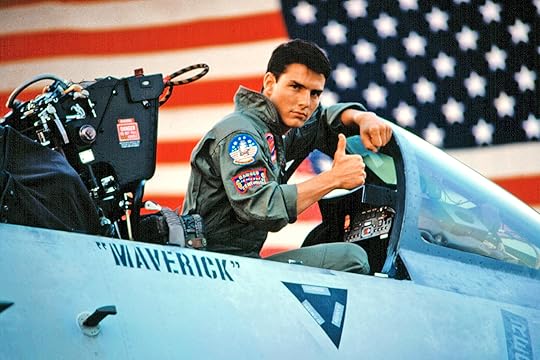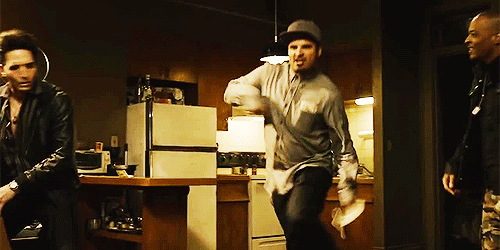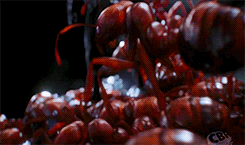Learn How to Set Up the Potential for Change in Character Arcs

Note from K.M. Weiland: Welcome to a special follow-up post to my (temporarily) completed series The Do’s and Don’ts of Storytelling According to Marvel. Wordplayer and frequent blog commenter Usvaldo de Leon, Jr. (who will no doubt remind me “commenter” is not a word!) sent me the following thoughts on the use of excellent character arcs in Ant-Man. His comments were so good I had to share, and he was gracious enough to oblige. Please enjoy one last look at my favorite superhero film series before we take a break until Dr. Strange releases in November…
***
I used to be a psychic in the circus; indulge me: you have read a book or watched a film or TV show… perhaps even many? Maybe you have even watched a play (a “play” is a TV show with live actors, no commercial breaks, and you have to pay for your snacks)?
You may have noticed these all are stories, communicating themes both noble and base. The agent who communicates this theme is the protagonist, who changes throughout the story to elucidate the theme. This is referred to as a character arc: the character begins at Point A, flies through the air like Morpheus and lands at Point B, far away. When they land at Point B they are utterly changed and this change has two factors: it is both a result of the events of the story and emblematic of the theme of the story.
It is theme that separates; story is extremely common. It is dreary, even: Boy Meets Girl, Boy Loses Girl, Boy Wins Girl Back is the story for an entire genre. Similarly, Top Gun and Flight: same story (both feature inverted planes, in fact). Ben Hur and Gladiator: same story. Lord Foul’s Bane and Dreamlander: same story. Like siblings, they have a familial resemblance, but their themes ensure they are different. There is more than one path through the forest; a warren of routes from Points A to B.
How Theme Demonstrates Character Arcs
When we say the protagonist changes, what is actually changing? It is their inner state that is changing. They believe a Lie and over the course of the story they discover the Truth. This happens in three phases: Point A, the jumpoff point; the Midpoint, or flying through the air like Morpheus; and Point B, the ending state. (Note that when Neo, who is not prepared to change as a character, makes this jump he fails spectacularly. The metaphor is a metaphor.)
In Ben Hur, Ben Hur has a lightness of soul (jump-off point); after being sold into slavery, his only goal becomes revenge (flying); but through Jesus, he learns forgiveness and the power of grace (the landing spot).

Maximus, in Gladiator on the other hand, lives at the right hand of the Devil, his troops unleashing hell upon his command; after being sold into slavery, his only goal becomes revenge; he gets his revenge and with it the release of death.

Top Gun is the story of a U.S. Navy fighter pilot, prettier than he is smart, who does things his way until he gets it through his thick skull that he has to play nice with others.

Flight is the story of a hotshot commercial jet pilot, prettier than he is smart, who does things his way until he finds himself in a situation he cannot fly out of.

The theme of Top Gun is: One must know their place, be selfless and give their all to help the team win.
In Flight, it is that a pilot—and a man—must care more for others than himself.
For the theme to work with the story, the protagonist needs to progress in line with the story beats.
At Point A, Maverick is so concerned with demonstrating his awesomitude he forgets to have his buddy’s back, which nearly kills the buddy. Maverick is so dense that he does not even understand why this is a problem. However, by Point B: Maverick is aware he has great ability but is willing—even eager—to sublimate that ability for the Top Gun, Iceman, if it accomplishes the team’s goal. (The goal in this case being starting World War III by shooting down Soviet jets, but hey, I never said Top Gun was thoughtful, only instructive.)
In Flight, Point A finds Whip Whitaker hopelessly addicted, deeply irresponsible, and leading a selfish life. Point B finds him at peace, despite jail, and serving others. He has lost everything except the things he needed: his self-respect and the love of family and friends.
Which brings us to the Marvel film Ant-Man. Protagonist Scott Lang also begins in jail and comes close to winding up right back there for most of the film. How he avoids that fate is the arc he undergoes. How does this happen?
Begin Your Story 180 Degrees Away From the Theme
The only way to prove the importance of your theme is to put your main character in diametric opposition to the theme at the start. Point B is the character aligned with the theme. Push point A as far from the theme as possible. The plot is designed to get the protagonist from Point A to Point B.
The theme of Ant-Man is: A hero is a person who makes a tremendous sacrifice for the greater good, usually at great cost to himself.
As the film begins, Point A for Scott is, “I can’t do anything that will jeopardize my access to my daughter.” His mindset is selfish. It has nothing to do with what his daughter wants—only what Scott wants. In fact, Scott’s ex-wife tells him what his daughter wants: “Be the hero she already imagines you to be.” If Scott had just done that from the beginning, it would have saved us all a lot of trouble.

In Top Gun, Maverick leaves Cougar’s wing to attempt the impossible and invert his jet. Maverick then goes to retrieve Cougar, who is rattled by the hostile encounter and nearly crashes. With bravery equal to his foolhardiness, Maverick saves the day after initially ruining it. Point A is selfish and reckless.
Whip Whitaker saves the day in Flight, inverting his commercial jet (another impossible move) to crash land in a field and save almost everyone. No one but Whip could have done that. However, Whip is totally lost: doing cocaine the night before a flight and drinking while flying. Point A finds Whip so lost in pride and pain he can’t see how his selfish actions hurt others.
Provide Signposts Along Your Character’s Journey
When you are traveling the interstate, it is easy to wonder: are we there yet? Then a flash on the roadside says: [Place you want to go] 106 miles.
Stories use the same signposts to show how far the main character has traveled. Very often, there are two character types the protagonist can be measured against (h/t Chris Soth): the character who represents the past and no change and the character who represents the future and positive change.
In Ant-Man, the characters who represent the past are Scott’s criminal buddies. Eventually, however, even they change, reflecting the theme, as does every major character in the film (save one), but in the beginning they want to hold Scott back.

The character who represents the positive change future is Antony, Scott’s carpenter ant steed. Like all the ants, Antony stands ready to sacrifice for the greater good. Throughout the film, the ants work together selflessly to accomplish the team goals.

(It is one of the great weaknesses of the film that, when Antony is killed, the moment means nothing because the ants are all CGI and have zero personality. I refer you to the first and still best film in this series, Iron Man, which anthropomorphized not one but two robots, for an example of how it can be done).
Top Gun’s character who represents not-changing is Goose, Maverick’s RIO. Goose enables Maverick in his reckless antics, which ultimately costs him his life. The character who represents positive change—what Maverick could be—is Iceman. Maverick has no truer friend (at least to his flying career) than Iceman, who gives him a steady drumbeat of the actions he should be taking. Because Iceman is written and played repellently, he is usually seen as the antagonist, but the antagonist—the person who is most determined to stop Maverick from reaching his goals—is Maverick himself.
In Flight, the character who represents the past for Whip is his drug dealer Harling, who has a vested interest in keeping Whip out of his mind on drugs. The character who represents the future is the recovering drug addict Nicole, who breaks off their fledgling romance rather than let Whip pull them both down.
Include a Huge Decision at Your Story’s Midpoint
One can never know for sure where a protagonist is headed until the Midpoint. Negative themes are just as valid as positive ones, and it is here the determination is made.
In Ant-Man, the Midpoint comes when Scott is unwittingly sent to infiltrate an Avengers facility. Scott is ordered to abort—but if he had, he would have remained selfish. However, he is confident in his ability to accomplish the mission. The Midpoint is where Scott begins to become selfless (if we don’t have this device, we can’t stop Cross).

After his cancer diagnosis, what does Walter White do in Breaking Bad? He decides to sell drugs. Way to take your arc negative at the Midpoint, Walt!
In Flight, at the Midpoint when Nicole leaves Whip, Whip could have decided there was no longer any point in changing. The negative arc would have ended “happily” with Whip cleared by the National Transportation Safety Board, but at the cost of all his family and friends.
What About the Bad Guy?
In the summer of 1492, it was unbearably hot in Spain and Christopher Columbus could not even. He convinced the queen to give him three ships, and he set sail to party with Rihanna in Barbados. He started in Point A: Spain. He ended in Point B: Hispaniola. What was it that brought him there, across the ocean? It was the wind, an unseen force driving Columbus to make small adjustments every day to stay on course.
For protagonists, the antagonist is like the wind for ships in the age of sail. It is the driving force, constantly pushing characters to arrive at their destination. Unfortunately, none of our previous examples are any good here. Top Gun and Flight both feature internal antagonists; Ant-Man has an antagonist that is kind of foisted onto Scott; it’s one of the major weaknesses of the film. So we will press into service one of the great antagonists of all time: Vader. Darth Vader.

Let us look at Star Wars with fresh eyes. Darth Vader is forced home to Tatooine, where he sees his son Luke has grown up into a hot, whiny mess. Clearly, Darth’s brother and his wife were not up to the job of raising Luke, so Darth has them summarily whacked. This forces Luke’s hand. Instead of staying home like a whiny ne’er-do-well, he must go on an adventure with Obi-Wan.
When Luke arrives at the Death Star, he is pretty much just as whiny as ever. Darth forces him to use his resourcefulness to avoid being crushed (although if the whiny boy is crushed, that would also work; Darth is a tough dad). But the boy does not seem to be getting it. Darth therefore has no choice but to kill the boy’s mentor before the boy’s horrified eyes.
And what do you know? Luke volunteers to attack the Death Star; but he keeps futzing around, so Darth has to get himself winged by Han Solo so the kid will finally take the shot—and who gets the credit for helping this boy grow by learning some tough lessons? Darth? No: Obi-Wan. Nobody ever thanks Daddy. The things fathers do for their children…

It is through the well-timed obstacles the antagonist places in the path of the protagonist that the protagonist, through both reacting and acting, grows and reaches Point B. The reason this is possible is that these two characters are yoked together. They diametrically oppose each other. Luke stands for goodness, light, and artisan lollipops, while Darth stands for evil, darkness, and lollipops mass-produced by starving children. Anything Darth does will negatively affect Luke and vice versa.
In Ant-Man, Darren Cross was Hank Pym’s antagonist and Cross’s actions do not directly affect Scott until the climax.

Carefully Plan Your Climactic Encounter
We’re midway through the Third Act. The main character knows what they need to do. However, it is not understanding but action that defines character. And so the main character will be faced with a crisis where they will be forced to choose: the past or the future? Point A or Point B?
In Ant-Man, that moment comes when Yellow Jacket has Scott’s daughter and is too powerful for Scott to defeat. The only way to stop Yellow Jacket is to go sub-atomic, which is a suicide mission. The crisis: Does Scott continue to be selfish or does he sacrifice himself to save his daughter? Only pausing long enough for the audience to understand the stakes, Scott shrinks himself—fully aligning himself with the film’s theme. He chooses to be the hero his daughter always imagined him to be.

In Top Gun, Maverick is faced with a double crisis: Does he let his fear get in the way of rescuing his teammates? And will Maverick fly as the wingman or will he does he own thing? Maverick conquers his fear and sublimates his ego to accomplish the mission. He chooses to be a teammate.
In Flight, Whip is before the NTSB when he is asked about two missing vodka bottles. The crisis: Does Whip continue lying and smear his sometime girlfriend Trina, who died in the crash? Or does he stand up, take responsibility for his actions, which will send him to prison? Whip decides it is time to tell the truth, landing him in prison. He chooses to accept responsibility.
The crisis moment is the theme question. Is the main character going to align to the theme? Are they going to choose to become what the theme dictates they become? (Spoiler Alert: Yes)
Prove Your Character’s Change in the Resolution
Have you ever noticed people smile all the time in films? The positive arc is by far the most popular arc, which means the ending is usually a new beginning: Maverick and Iceman smiling and… hugging? (I might be misremembering that.) Whip and his son bonding on a prison visit. And perhaps most improbably, Scott having dinner with his ex-wife and her fiancé, with good feelings all around, interrupted by a possible call for Scott to join the Avengers.

There needs to be a moment at the end of a story where everyone catches their breath and reflects on how far the protagonist has come (in a positive or negative arc; a flat arc character does not change). This coda reinforces the change and sends the audience off in the right emotional state.
The character arc concept is a key element in developing a satisfying story. The character arc is one of the primary reasons mankind has stories. Aristotle laid down the rules millennia ago; even today, reading Poetics is pretty much all you need. Why are you still reading this?
Stay tuned: In November, we’ll be learning some more marvelous things from Dr. Strange.
Previous Posts in This Series:
Iron Man: Grab Readers With a Multi-Faceted Characteristic Moment
The Incredible Hulk: How (Not) to Write Satisfying Action Scenes
Iron Man II: Use Minor Characters to Flesh Out Your Protagonist
Thor: How to Transform Your Story With a Moment of Truth
Captain America: The First Avenger: How to Write Subtext in Dialogue
The Avengers: 4 Places to Find Your Best Story Conflict
Iron Man III: Don’t Make This Mistake With Your Story Structure
Thor: The Dark World: How to Get the Most Out of Your Sequel Scenes
Captain America: The Winter Soldier: Is This the Single Best Way to Write Powerful Themes?
Guardians of the Galaxy: The #1 Key to Relatable Characters: Backstory
The Avengers: Age of Ultron: The Right Way and the Wrong Way to Foreshadow a Story
Ant-Man: How to Choose the Right Antagonist for Your Story
Captain America: Civil War: How to Be a Gutsy Writer: Stay True to Your Characters
Wordplayers, tell me your opinion! In your character arcs, what are your characters’ starting and ending mindsets? Tell me in the comments!
The post Learn How to Set Up the Potential for Change in Character Arcs appeared first on Helping Writers Become Authors.




